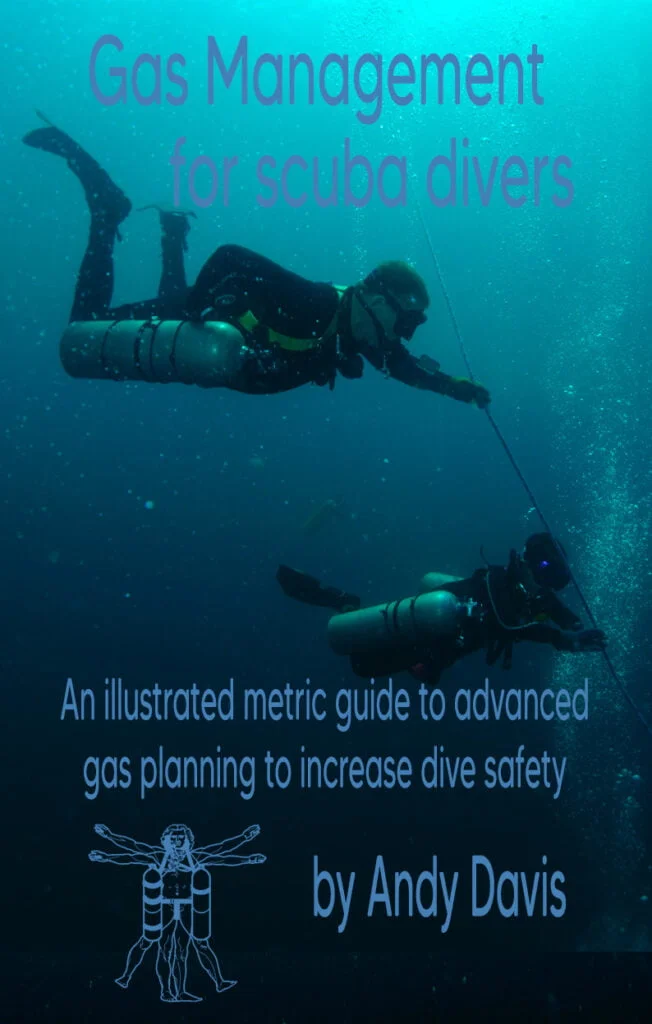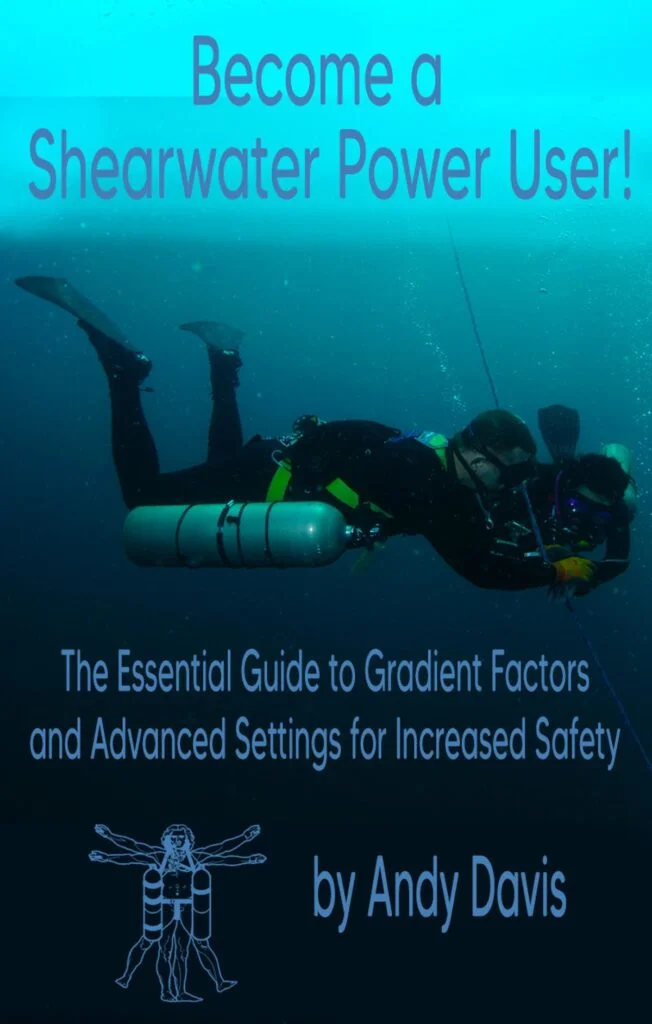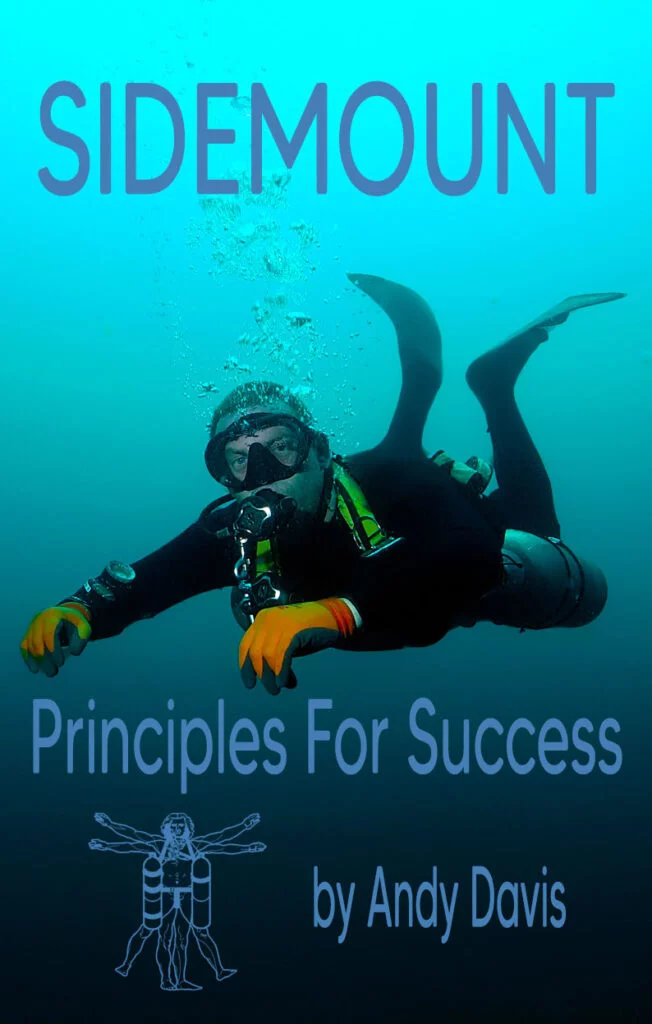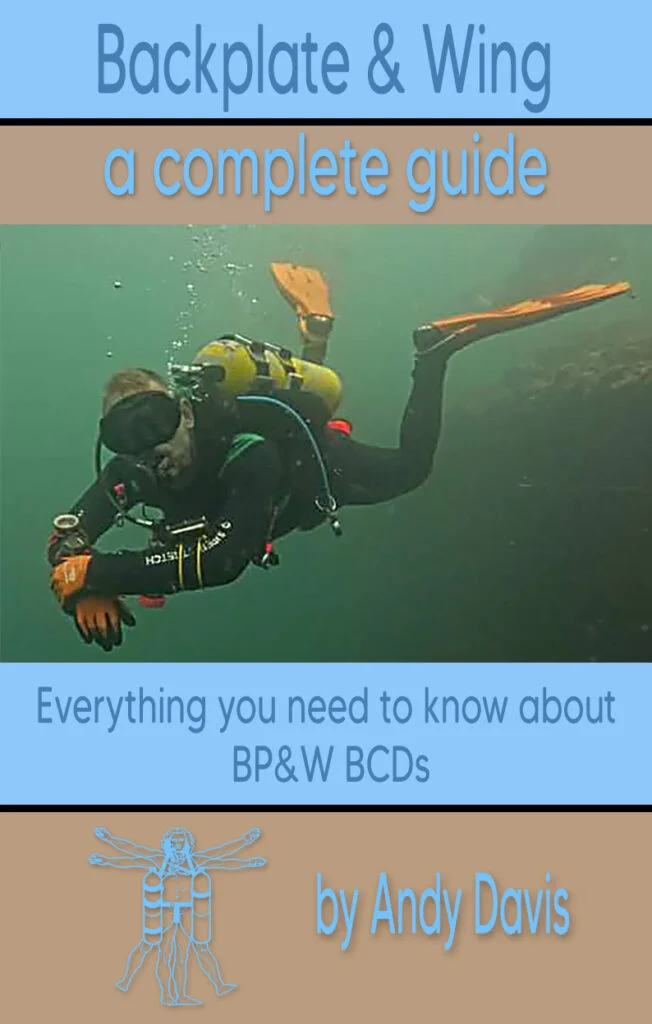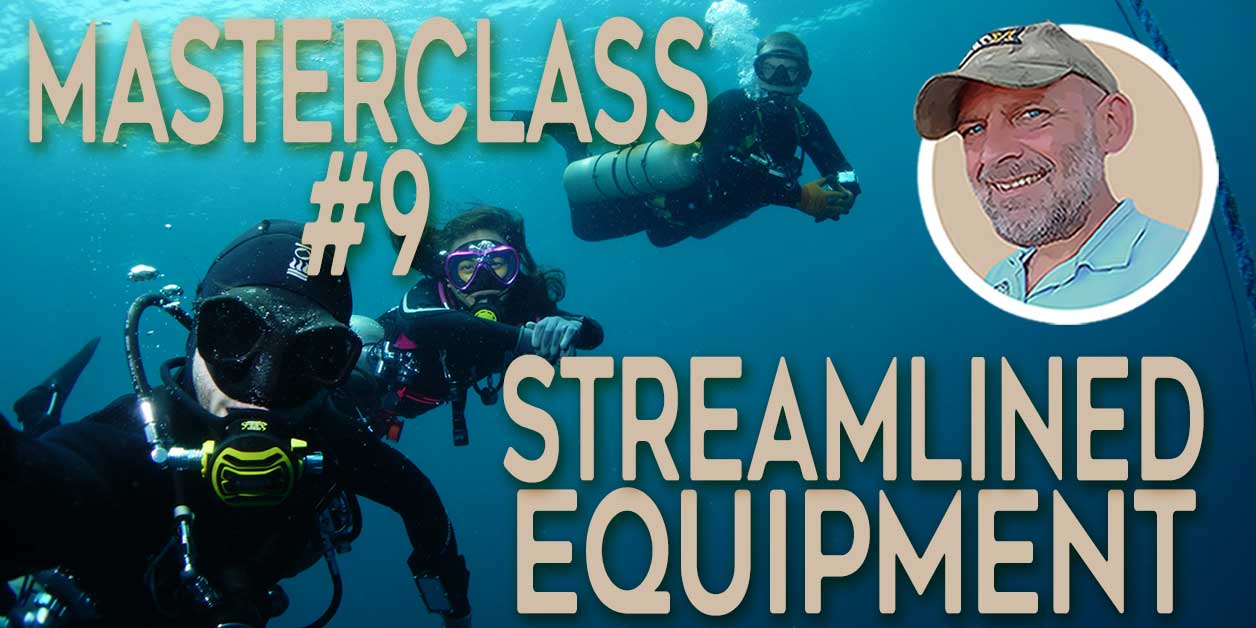How To Use A Long Hose Regulator Configuration For Recreational Single-Tank Diving
Diving safety is paramount, and the configuration of your equipment plays a crucial role in ensuring a secure and streamlined dive. Using a long hose regulator configuration can help you with that.
In this article, we’ll delve into the advantages and disadvantages of using a long hose in recreational single-tank diving. I will illustrate how it can be configured using Hogarthian and DIR principles. You will learn about the protocols and procedures necessary to use it effectively.
Whether you’re a seasoned diver or a beginner, understanding the benefits and techniques associated with the long hose regulator configuration can enhance your diving experience.
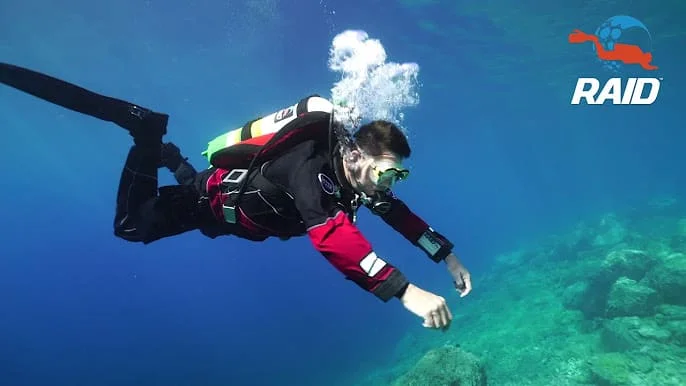
What is a Long Hose Regulator Configuration?
The long hose regulator configuration involves an extended second-stage regulator hose, typically ranging from 5-7 feet (1.5-2m). The primary purpose of this setup is to facilitate air sharing consistently across a diverse range of emergency situations.
Worn looped around the torso and neck, the long hose can be easily deployed to a buddy under any circumstances. This configuration is especially popular in diving environments where a standard-length diving octopus (AAS) is insufficient. For instance, when passing restrictions in wreck and cave diving.
Key Features of a Long Hose Regulator Configuration:
- Extended Hose Length: In a long hose configuration, the primary second-stage regulator is attached to a 5-7 feet (1.5-2m) hose.
- Routing Around the Torso and Neck: The long hose is routed under the diver’s arm, around the torso and neck. This routing provides a streamlined and tidy arrangement, minimizing the risk of entanglement.
- ‘From The Mouth’ Gas Donation: The long hose is used to donate gas. It is delivered directly from the donor’s mouth. Then they will switch to their own backup regulator.
- Backup Second Stage Placement: The backup second stage regulator is typically secured on a necklace bungee beneath the diver’s chin. This positioning ensures easy access in case of an emergency or the need for gas sharing.
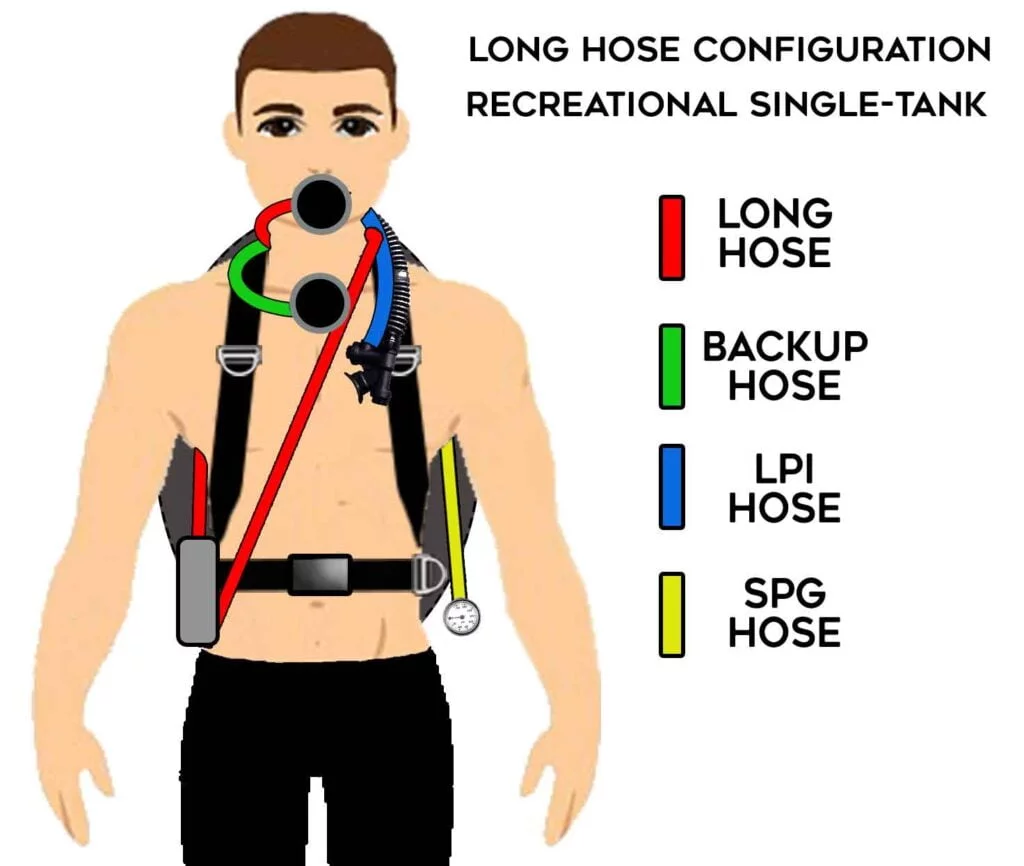
Why Use A Long Hose?
Long hose regulator configuration is traditionally ubiquitous to cave and technical diving. Additionally, it is taught by esteemed agencies like Global Underwater Explorers (GUE), RAID, or Unified Team Diving (UTD).
However, misconceptions often arise among less experienced divers. They mistakenly assume that the long-hose configuration is reserved exclusively for highly specialized and advanced diving activities.
It’s crucial to dispel these misconceptions. The long hose configuration can provide substantial benefits, even for recreational divers.
Important Note: Training agency standards, including PADI, do not prohibit long-hose configuration on any diving course. This includes entry-level Open Water Diver training. It is a universally validated and accepted method of diving.
What Benefits Does A Long Hose Regulator Configuration Offer?
The primary purpose of the long hose is to best enable assisting a fellow diver in an out-of-air situation.
Unlike the conventional approach of offering an octopus, the diver donates the primary long-hose second stage directly from their mouth. They then switch to their alternate source, conveniently secured below the chin in a bungee necklace.
This approach is considered ideal for two primary reasons:
- Alternate Air Source Reliability: The diver knows the donated regulator’s 2nd stage is 100% functional. They were just breathing from it.
- Traditional alternate air sources (AAS) are not checked throughout a dive; there are many reasons why they could become non-functional.
- The out-of-gas diver has the greatest immediate need for the air source. As the donor, you have more time available to resolve unforeseen issues.
- Better For A Panicking Buddy: A panicked buddy is prone to snatching the regulator out of a diver’s mouth.
- With a long-hose regulator configuration, this is the regulator you plan to donate anyway.
- You can let the diver snatch away your long-hose regulator and simply put your bungee necklace short-hose into your mouth.
- Regulator snatching can be avoided through better situational awareness and consistent buddy observation.
- Proactive gas donation remains the ideal method for safety and security.
Beyond the efficiency of gas sharing, long-hose configuration offers a number of other benefits:
- Streamlined Hose Management: A long-hose configuration is streamlined to the body, not projecting outwards from the divers. Having hoses snug into the body significantly reduces the likelihood that they can entangle or snag on other objects.
- Gas Sharing in Confined Spaces: Air-sharing divers can navigate in single file through narrow areas in caves and wrecks. Traditional regulator hose configuration does not allow this.
- More Flexible Air-Sharing Ascents: Divers can utilize the extra hose length to create distance between themselves during an air-sharing ascent. This enables far more control for both divers and prevents the divers from getting in each other’s way.
Overall, a long-hose regulator configuration presents a practical and safety-enhancing solution for divers of all skill levels.
What are the Drawbacks of Long Hose Regulator Configuration?
Whilst the long hose regulator configuration offers substantial benefits, it is not without limitations and drawbacks:
- Specific Protocols Required: Donating a long hose demands adherence to a specific gas-sharing protocol (shown below). This differs from the skills taught when divers learn using a conventional octopus alternate air source (AAS).
- Long Hose Management: The long hose needs to be routed and stowed in a very particular way (i.e. ‘Hog Looped“). This is necessary to keep it streamlined, manageable, and immediately accessible.
- Best with a BP&W BCD: Using a long hose regulator configuration is most effective with a backplate and wing-style BCD. In particular, the webbing harness provides the best means to stow surplus length from the long hose. It also allows the SPG to be clipped onto a hip D-ring on the left waist webbing.
It is important to note that the first two limitations mentioned are easily rectifiable through appropriate training and practice.
What is the History of Long Hose Regulator Configuration?
The long hose configuration first gained prominence among cave divers. This was due to its effectiveness in gas sharing, especially when navigating tight underwater restrictions. This approach was subsequently adopted by the wider technical diving community.
Cave and technical diving focus on best practices. As such, they recognized the overwhelming benefit of long hose regulator setup. The most common approach is known as the ‘Hogarthian’ regulator configuration.
What is Hogarthian Regulator Configuration?
Bill Hogarth Main, a pivotal figure in the evolution of modern cave diving, developed the Hogarthian dive gear configuration. His minimalist philosophy became the driving force behind the design and widespread adoption of the Hogarthian regulator configuration.
The Hogarthian regulator configuration, also referred to as the “Hog loop,” embodies a minimalist ethos in scuba diving equipment setup:
- This approach prioritizes simplicity, efficiency, and a streamlined design.
- It involves a long hose for the primary second stage, often routed under the arm, encircling the torso and neck.
- The backup second stage is secured on a necklace bungee beneath the diver’s chin, ensuring easy access in critical situations.
Hogarthian dive gear configuration plays a role in the DIR diving philosophy. You may have heard long hose regulators described as a “DIR” configuration.
What is DIR Diving and How Did it Evolve from Hogarthian Dive Gear Configuration?
DIR (Doing It Right) diving is a systematic and standardized approach to scuba diving that originated from the minimalist Hogarthian configuration.
Developed by GUE (Global Underwater Explorers), it primarily emerged as a holistic best practice developed during the WKPP (Woodville Karst Plain Project) cave exploration in Florida.
DIR diving evolved by incorporating minimalist, best-practice, principles from the Hogarthian configuration with standardized team protocols and procedures to create a more systematic approach to diving safety:
- DIR emphasizes standardization in equipment configurations, procedures, and teamwork to enhance safety and efficiency during dives.
- It involves precise gear selection and placement. It aims to reduce variables, avoid known failures and issues, along with reducing the cognitive loading of dive skills.
- Effective teamwork and communication are promoted to ensure a synchronized and safe diving environment.
- The philosophy aims to minimize stress and task-loading by providing divers with a systematic and universally familiar setup.
- DIR philosophy also begins with the end in mind. This ensures that dive gear and procedural familiarity are not lost as the diver progresses to higher levels of diving.
Long Hose ‘From The Mouth’ Versus Traditional Octopus Gas Donation
Opting for a long hose regulator configuration necessitates ‘from the mouth‘ gas donation. This differs from the traditional ‘octopus’ method taught in the vast majority of open water diver courses.
‘From the mouth’ gas donation isn’t that uncommon. For instance, it’s the method used by any recreational diver who opts for an AIR-2 style integrated AAS-LPI regulator.
Consider whether ‘from the mouth donation’ is preferable to conventional air-sharing when deciding if a long hose is best for you.
Traditional Octopus Gas Donation Pros and Cons
In a traditional octopus setup, the alternate second-stage regulator uses a slightly longer (90-100cm/30-40″) than the primary second stage. Additionally, the octopus is stowed away, unused, throughout the dive and is donated to an out-of-gas diver when required.
Pros:
The octopus AAS provides a common approach, taught in entry-level courses globally. This promotes widespread familiarity and your buddy will understand how gas will be shared.
Cons:
The common sight of a dangling octopus AAS illustrates the unreliability of accessories meant to secure it to a BCD. This setup compromises swift gas donation and exposes the AAS to damage. Stowing the octopus in a BCD pocket or behind a strap adds risk, causing delays in emergencies.
Octopus regulators remain unused throughout the dive, leading to potential damage or blockage unnoticed by the diver. Malfunctioning regulators pose a life-threatening problem for an out-of-gas diver in a critical moment.
In out-of-air scenarios, a panicked buddy might instinctively snatch the most visible regulator—in your mouth. As a result, you can be left fumbling for your own octopus, a maneuver few divers are specifically trained for.
Traditional octopus regulators demand close proximity during a gas-sharing ascent. Consequently, this increases stress and hampers maneuverability. Additionally, it impedes the operation of critical equipment, such as the Low-Pressure Inflator (LPI) for buoyancy control during ascent.
‘From The Mouth’ Gas Donation Pros and Cons
‘From the mouth’ gas configuration involves donating the regulator that you are currently breathing from. Then, once the regulator is donated, the diver immediately switches to a backup regulator. This is simple as it is usually stowed in a bungee necklace beneath their chin.
Pros:
You are breathing from the donated regulator throughout the dive and ensures its functionality in an emergency. This eliminates the risk of a malfunctioning regulator shocking an out-of-air diver.
In panic situations, divers often reach for the regulator in their buddy’s mouth, making the long hose configuration safer. Also, the backup regulator, worn on a necklace, is considered safer due to its proximity to the diver’s mouth.
Cons:
From the mouth gas donation demands training and deliberate practice in a specific donation protocol.
When donating a long hose, you briefly give up the regulator you’re breathing from. This prioritizes gas supply to the diver in need. This may not be suitable for divers prone to panicking without a regulator in their mouth. The tendency to panic when briefly deprived of a gas supply should be remedied by training and stress management techniques.
Lastly, effective communication with a new buddy is critical to ensure they understand your equipment and gas donation protocol. Remind them that the regulator in your mouth is the one you’ll donate if they signal “out of gas”.
How To Setup a Long Hose Regulator Configuration for Single Tank Recreational Diving
The Hogarthian long-hose regulator configuration is easy to set up for recreational diving.
Hardware Needed For A Hogarthian Long Hose Configuration
You will need:
- 1st Stage Regulator
- 2nd Stage Regulators
- 5-7ft (1.5-2m) Primary Regulator Hose
- Small Boltsnap for long hose
- 22-24″ Backup Regulator Hose
- Bungee Necklace
- Submersible Pressure Gauge (SPG)
- 26″ High Pressure SPG Hose
- Large boltsnap for SPG
- BCD Low-Pressure Inflator (LPI) Hose
- Drysuit Inflator Hose (if applicable)
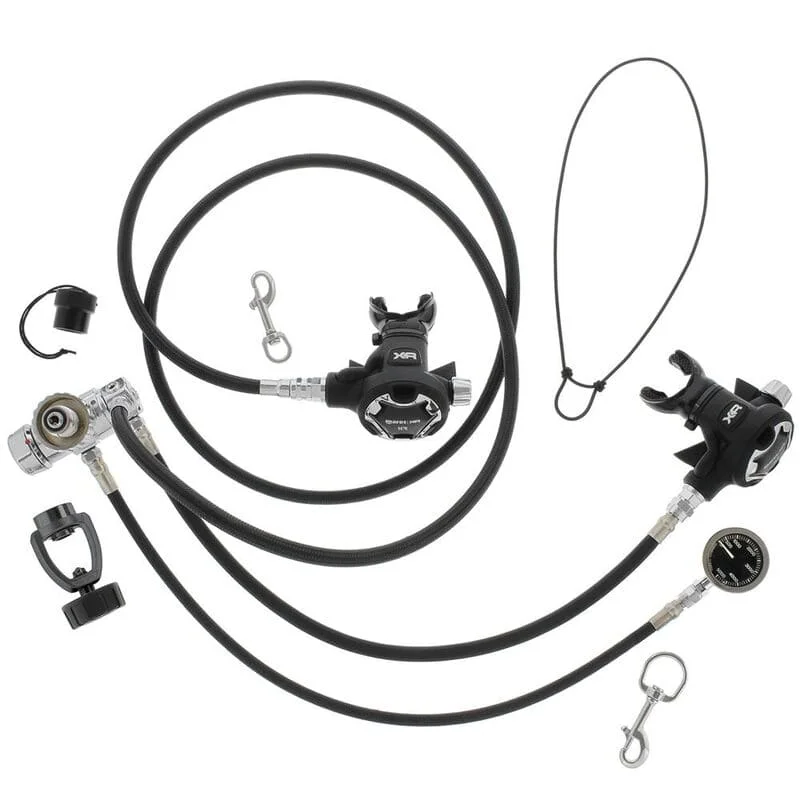
How the Hogarthian Long Hose System is Configured

On the Diver’s Right Side
Here’s a breakdown of what’s on your right side:
- Long Hose: Routed from the right side. It runs straight downwards from the 1st stage, before coming around at the waistbelt level, running up across the chest, then around the neck from the left side (counter-clockwise). Surplus hose length is stowed at the right waistbelt (see below for details).
- Backup Regulator Hose: Typically 22-24″. It is routed behind the neck to come around to your mouth from the right-hand side (counterclockwise). The backup hose length is crucial for a streamlined configuration. It needs to allow the regulator to rest under your chin. Additionally, it must permit enough movement to look to the left when breathed.
To keep the configuration streamlined, surplus long-hose length is stowed at the diver’s waist on the right side. There are four options for this:
- Canister Light: A canister light can be worn on the right waist webbing. The long hose routes under the canister light.
- Long-hose Bar Retainer: If not using a canister light, the diver can use a small bar, threaded onto the waistband, to provide the same long hose management function.
- Waistband pocket: The diver can add an optional stowage pocket to their right waistband, and the long hose routes under the pocket.
- Tucked Into The Waistband: The diver can simply push excess long hose length down through their webbing waistband. This remains easily deployable.
On the Diver’s Left Side
Your left side is home to crucial components that contribute to your diving experience:
- Low-Pressure Inflator (LPI): Connected to the left side of the 1st stage, this hose routes along the BCD corrugated hose. Its length varies based on the BCD’s corrugated hose.
- Drysuit Hose: The drysuit hose is routed from the left side of the 1st stage and under your left arm. Length is as needed for unrestricted movement.
- SPG/HP Hose: Connected to the high-pressure (HP) port of the 1st stage. This 24-26″ hose must be long enough to allow the SPG to clip onto a left hip D-ring. But not so long that it bulges outwards or allows the SPG to dangle below you.
Remember, the right hose lengths contribute to a neat and efficient profile underwater, enhancing your safety and diving experience.
Switching to a long hose regulator for your recreational diving
Dive confidently with the long hose regulator for single-tank recreational diving. It is not just for technical and cave divers.
From its advantages in gas donation to the precision of Hogarthian and DIR approaches, this article has guided you through setting up your long hose configuration. You should now understand the pros and cons, grasp the nuances of from-the-mouth donation, and be able to align your regulator configuration with DIR principles for enhanced safety.
As you venture into the underwater realm, remember the importance of a well-configured long hose for a seamless, safe diving experience. Embrace the knowledge, prioritize safety, and make every dive a rewarding exploration with the long hose regulator configuration.”
About The Author

Andy Davis is a RAID, PADI TecRec, ANDI, BSAC, and SSI-qualified independent technical diving instructor who specializes in teaching sidemount, trimix, and advanced wreck diving courses.
Currently residing in Subic Bay, Philippines; he has amassed more than 10,000 open-circuit and CCR dives over three decades of challenging diving across the globe.
Andy has published numerous diving magazine articles and designed advanced certification courses for several dive training agencies, He regularly tests and reviews new dive gear for scuba equipment manufacturers. Andy is currently writing a series of advanced diving books and creating a range of tech diving clothing and accessories.
Prior to becoming a professional technical diving educator in 2006, Andy was a commissioned officer in the Royal Air Force and has served in Iraq, Afghanistan, Belize, and Cyprus.
In 2023, Andy was named in the “Who’s Who of Sidemount” list by GUE InDepth Magazine.
Purchase my exclusive diving ebooks!
Single Tank Long Hose Regulator FAQs
A long hose regulator configuration has benefits for all levels of diving, from beginners to technical and cave divers. It is permissible by all leading dive agencies.
The DIR long hose should be 7′ (213 cm), but 5′ (152 cm) is optional for recreational-level divers.
The diver breathes from a 1.5-2m (5-7′) long hose, which is also donated to an out-of-gas buddy. The diver then switches to their backup regulator, on a short hose, held beneath their chin.
Yes, PADI and all leading dive training agencies, permit long hose regulators on any diving course.
A Hog Loop is the nickname for a Hogarthian configuration long hose. The hose runs downwards from the 1st stage, across the torso, and loops counterclockwise around the diver’s neck.
Originally posted 2023-10-04 17:08:52.


